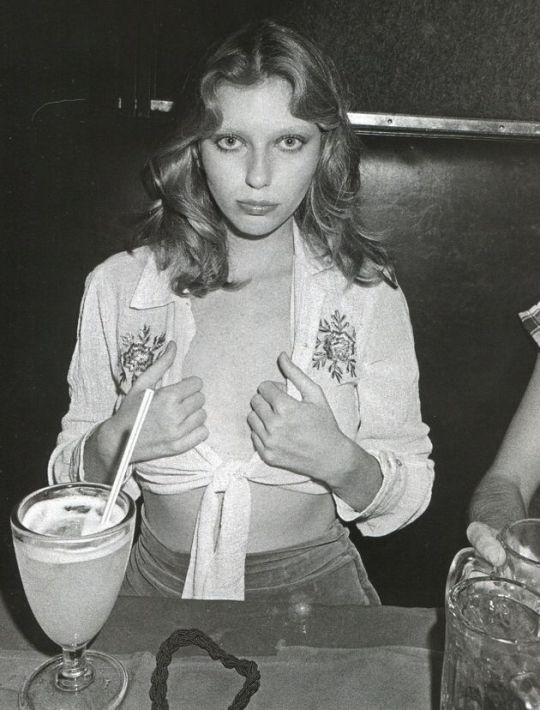#1972 Bebe
Text
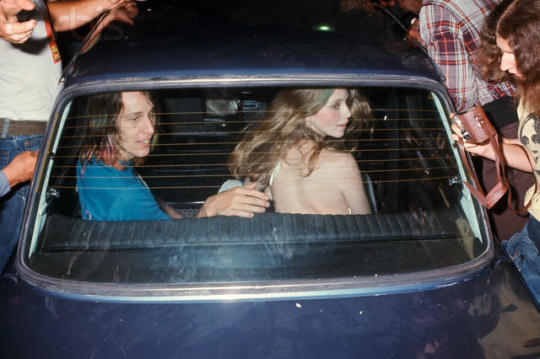
Ca. 1972/73 - American musician and producer Todd Rundgren and American model Bebe Buell, by Neal Preston.
Unknown further details of this iconic photo!
#Todd Rundgren#Bebe Buell#Neal Preston#1972#1973#1970s#1972 Bebe#1973 Bebe#1970s Bebe#model#muse#musician#manager#author#singer#singer songwriter#songwriter
52 notes
·
View notes
Text
Eddie Redmayne Says 'Willkommen' to Broadway in First Production Photos from Cabaret Revival (Exclusive)
'The Good Nurse' actor is starring as the Emcee alongside Gayle Rankin as the musical's leading lady Sally Bowles
By Sabienna Bowman Published on April 15, 2024 02:30PM EDT
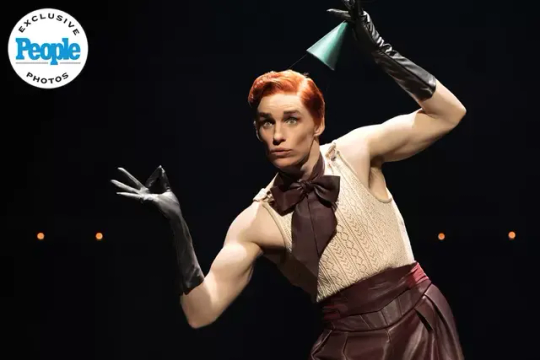
Eddie Redmayne is ready to put on a show in the first photos from Broadway's Cabaret revival!
In PEOPLE's exclusive first look at the famed John Kander and Fred Ebb musical's return to the Great White Way,The Good Nurse actor, 42, suits up at as Kit Kat Klub's mercurial Emcee. With his jaunty green party hat, oversized brown cravat and black gloves, Redmayne is both intriguing and imposing as the fascinating character.
In another snap of the Emcee in action, Redmayne leaps into the air as several members of the cast dance around him during the show's iconic opening number, "Willkommen."
See Eddie Redmayne and Gayle Rankin in First Rehearsal Photos for Broadway's Cabaret Revival (Exclusive)

Additional photos from the show shine the spotlight on House of the Dragon actress Gayle Rankin in the role of the vivacious nightclub singer Sally Bowles. In one compelling photo, she seems poised to take the stage with a microphone in hand as she's surrounded by ensemble members during the song, "Mein Herr."
Another picture finds Rankin in a ruffly white dress while holding a prop cigarette as she performs the song "Don’t Tell Mama."
The Cabaret revival is being directed by Rebecca Frecknall, who helmed the West End version, which also starred Redmayne. Previews began April 1 at the August Wilson Theatre in New York City, with the show set to officially open on April 21.
Never miss a story — sign up for PEOPLE's free daily newsletter to stay up-to-date on the best of what PEOPLE has to offer, from celebrity news to compelling human interest stories.

Cabaret has long been a success both on the stage and screen. Based on John Van Druten’s 1951 play I Am a Camera, which in turn was adapted from the 1939 novel Goodbye to Berlin by Christopher Isherwood, Cabaret first hit Broadway in 1966. It was later turned into the 1972 film of the same name starring Oscar-winner Liza Minnelli.
The musical tells the story of Sally, an ambitious English singer who starts up a relationship with American writer Clifford Bradshaw as he observes the eccentric characters who populate the Kit Kat Klub in Berlin. Set between World War I and World War II, the growing unrest beyond the club's doors is ever-present as the artists within express themselves through song.
It features a score by Kander & Ebb made up of a string of songs that have become musical theatre mainstays, like “Willkommen,” “Don't Tell Mamma,” “Mein Herr,” “Two Ladies,” “Tomorrow Belongs to Me,” “Money,” “Maybe This Time” and, of course, “Cabaret.”
Jennifer Lopez Visits the Kit Kat Club for Broadway Revival of Cabaret (Exclusive)
Redmayne, who also produces the Broadway revival, has long said that Cabaret “properly ignited” his love for theater, while playing the Emcee in a student production of the musical over 25 years ago.
In an October 2023 statement, he shared, "It now feels completely thrilling and a little surreal to be a part of Rebecca's truly unique vision of Masteroff, Kander, and Ebb's brilliance as it arrives on Broadway, where the piece has such a history."
In addition to Redmayne and Rankin, the rest of the principle cast is rounded out by Ato Blankson-Wood (Clifford), Steven Skybell (Herr) and Tony winner Bebe Neuwirth (Fräulein), as well as Natascia Diaz (Fraulein Kost and Fritzie); and Henry Gottfried (Ernst Ludwig).
The cast also includes, Gabi Campo (Frenchie), Ayla Ciccone-Burton (Helga), Colin Cunliffe (Hans), Loren Lester (Herman/Max), David Merino (Lulu), Julian Ramos (Bobby), MiMi Scardulla (Texas), Paige Smallwood as Rosie, and Marty Lauter (Victor) — also known as Marcia Marcia Marcia of RuPaul's Drag Race fame.
Tickets for Cabaret are on sale now.
https://people.com/see-eddie-redmayne-in-first-production-photos-from-cabaret-revival-exclusive-8633414
#eddie redmayne#eddie redmayne cabaret#cabaret new production#cabaret nyc#nyc#august wilson theatre#people magazine#people aricle#broadway#gayle rankin#sally bowles#the emcee#people#marc brenner#photographer
11 notes
·
View notes
Text
Broadway Divas Tournament: Round 3
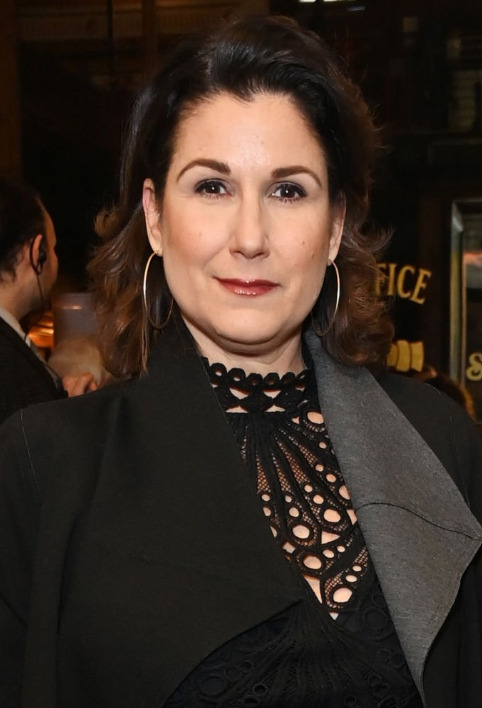
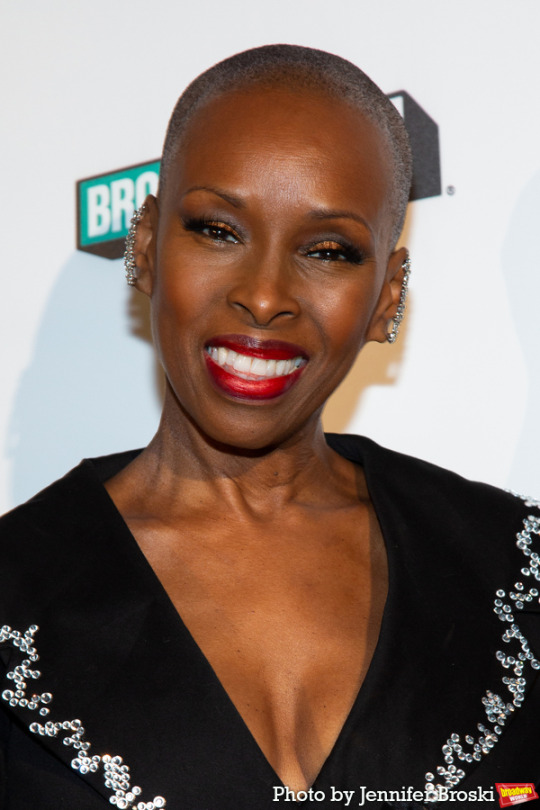
The original Elphaba to those who know, Stephanie J. Block (1972) won her Tony for The Cher Show (2018) where she was, of course, Cher. No stranger to playing icons of the highest order, she made her Broadway debut in 2003, originating the role of Liza Minnelli in The Boy from Oz. In addition to eight Broadway credits, she has an extensive resume of regional, touring, and concert performances across the country, and will make her West End debut in Kiss Me, Kate this summer. She starred in the 2022 Into the Woods revival opposite her real-life husband, Sebastian Arcelus. They met starring in Wicked together on tour.
Brenda Braxton (1956) is a Tony-nominated actress for Smokey Joe's Cafe (1995)with eleven Broadway shows to her name, and she, like many Chicago stars, has been in and out of that show many, many, many times. Lady Braxton has also directed and choreographed various productions of Dreamgirls. Brenda is a major advocate for aging gracefully, and has launched "Act 2...Now What?" a series of seminars for women over fifty transitioning to a post-menopausal life. Her quarterly subscription box, Pause, provides "women of a certain age" with products like tea blends, chocolates, lotions, and yes, vibrators.
NEW PROPAGANDA AND MEDIA UNDER CUT: ALL POLLS HERE
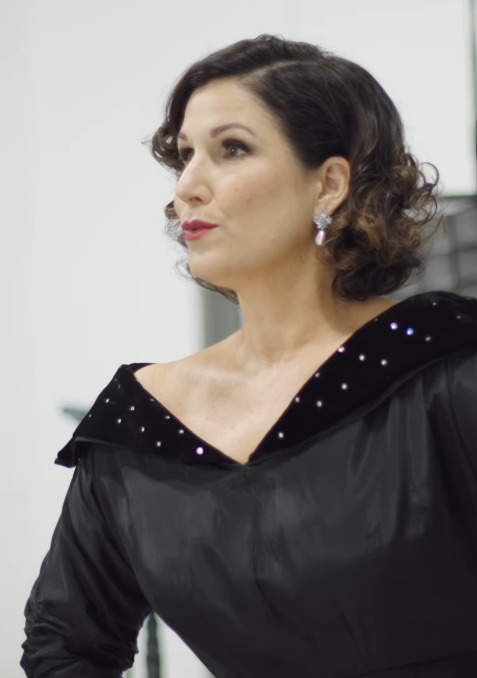
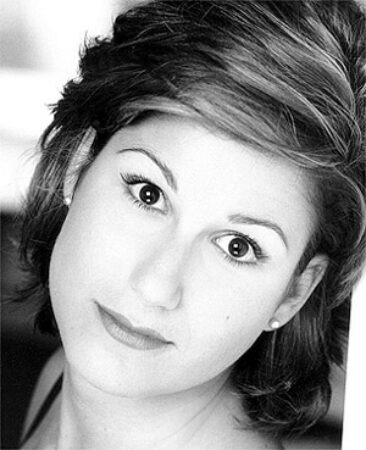
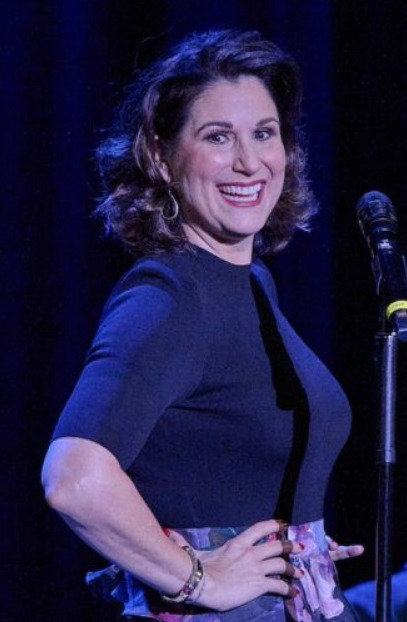
youtube
"I am once again asking who amongst you will be funding my London trip to see Stephanie J. Block in Kiss Me, Kate."


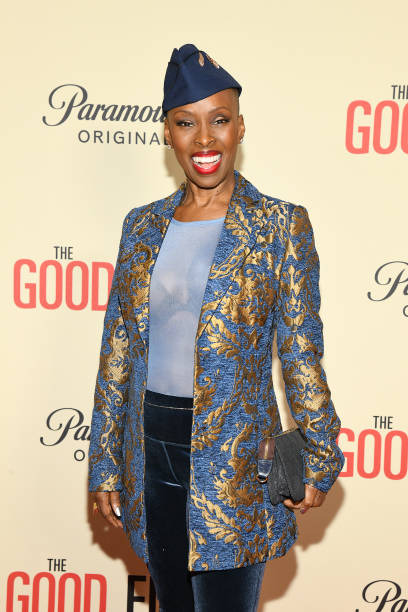
"So, I actually had most of the recording for Brenda Braxton: Stars Tonight! with Bebe Neuwirth and Allison Williams and was going to show off her "Don Juan" performance, but the video got corrupted. Instead, you get to enjoy a trio perform "My Own Best Friend." You're fucking welcome."
#broadwaydivastournament#broadway#tournament poll#broadway divas#musical theatre#stephanie j. block#brenda braxton#round 3
8 notes
·
View notes
Text
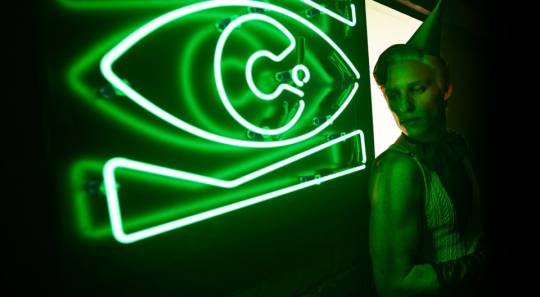
📷 Eddie Redmayne backstage during the London production.MASON POOLE.
The Untold History of Cabaret: Revived and Kicking.
As Broadway welcomes the ever-evolving musical, its star, Eddie Redmayne—along with Liza Minnelli, Joel Grey, and Sam Mendes—assess its enduring power.
Variety Fair, March 26th, 2024.
Excerpts:
"The revival of Cabaret—starring Eddie Redmayne as the creepy yet seductive Emcee; Gayle Rankin as the gin-swilling nightclub singer Sally Bowles; and Bebe Neuwirth as Fraulein Schneider, a landlady struggling to scrape by—opens April 21 at Manhattan’s August Wilson Theatre. It will do so in the shadow of a pogrom not seen since the Einsatzgruppen slaughtered thousands of Jews in Eastern Europe and in the shadow of a war between Israel and Hamas that continues into its fifth month, with the killing of thousands of civilians in Gaza. Nearly 60 years after its debut, Cabaret still stings. That is its brilliance. And its tragedy".
"Redmayne has been haunted by Cabaret ever since he played the Emcee in prep school. “I was staggered by the character,” he says. “The lack of definition of it, the enigma of it.” He played the part again during his first year at Cambridge at the Edinburgh Fringe Festival, where nearly 3,500 shoestring productions jostle for attention each. summer. Cabaret, performed in a tiny venue that “stank,” Redmayne recalls, did well enough that the producers added an extra show. He was leering at the Kit Kat Klub girls from 8 p.m. till 10 p.m. and then from 11 p.m. till two in the morning. “You’d wake up at midday. You barely see sunshine. I just became this gaunt, skeletal figure.” His parents came to see him and said, “You need vitamin D!”
In 2021, Redmayne, by then an Oscar winner for The Theory of Everything and a Tony winner for Red, was playing the Emcee again, this time in Frecknall’s West End production. His dressing room on opening night was full of flowers. There was one bouquet with a card he did not have a chance to open until intermission. It was from Joel Grey, who originated the role on Broadway and won an Oscar for his performance alongside Liza Minnelli in the 1972 movie. He welcomed the young actor “to the family,” Redmayne says. “It was an extraordinary moment for me.”
"Rebecca Frecknall (director) grew up on Mendes’s Donmar Warehouse production of Cabaret. The BBC filmed it, and when it aired, her father videotaped it. She watched it “religiously.” But when she came to direct her production, she had to put Mendes’s version out of her mind.
Mendes turned his little theater into a nightclub. Frecknall, working with the brilliant set and costume designer Tom Scutt, has upped the game. They have transformed the entire theater into a Weimar cabaret. You stand in line at the stage door, waiting, you hope, to be let in. Once inside, you’re served drinks while the Kit Kat Klub girls dance and flirt with you. The show’s logo is a geometric eye. Scutt sprinkles the motif throughout his sets and costumes. “It’s all part of the voyeurism,” Scutt explains. “The sense of always being watched, always watching—responsibility, culpability, implication, blame. Mendes’s Cabaret, like Fosse’s, had a black-and-white aesthetic—black fishnet stockings, black leather coats, a white face for the Emcee. Frecknall and Scutt begin their show with bright colors, which slowly fade to gray as the walls close in on the characters. “Color and individuality—to grayness and homogeneity,” Frecknall says.
As the first woman to direct a major production of Cabaret, Frecknall has focused attention on the Kit Kat Klub girls—Rosie, Fritzie, Frenchie, Lulu, and Texas. “Often what I’ve seen in other productions is this homogenized group of pretty, white, skinny girls in their underwear,” she insists. Her Kit Kat Klub girls are multiethnic. Some are transgender. Through performances and costumes, they are no longer appendages of the Emcee but vivid characters in their own right.
Her boldest stroke has been to reinvent the Emcee. She and Redmayne have turned him into a force of malevolence. He is still sexy and seductive, but as the show goes on, he becomes a skeletal puppet master manipulating the other characters to, in many cases, their doom. If Cumming’s Emcee was, in the end, a Holocaust victim, Redmayne’s is, in Frecknall’s words, “a perpetrator.”
Read more:
8 notes
·
View notes
Text
1972 Bruce Springsteen performing "Growin' Up" aka a bebe legend in the making
26 notes
·
View notes
Photo

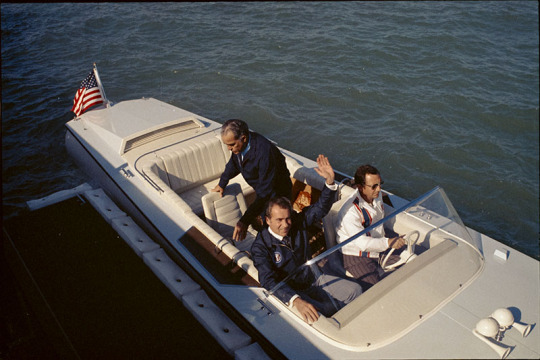
#Nixon50 #OTD 12/2/1972 President Nixon and friend Charles “Bebe” Rebozo boated Biscayne Bay, Florida on the Volga 70 hydrofoil, a gift from Soviet General Secretary Leonid Brezhnev. They transferred to Rebozo’s yacht “Coco Lobo III”, cruised to Rebozo’s home at the Ocean Reef Club, North Key Largo, and were joined by friend Robert Abplanalp. The President later returned to the Nixon compound at Key Biscayne by helicopter. (Image: WHPO-D1047-02 & 11)
4 notes
·
View notes
Text

Liv Tyler
Cannes 1996
Contax RTSIII CarlZeiss Sonnar T* 180mm f/2,8
...At some point she turned around and showed me her profile "Is she ok?" she asked me with a touch of irony. I nodded. The picture was excellent. I could see it without seeing it... (there were no camera screens back then.. .)
Tyler was born Liv Rundgren on July 1, 1977, in New York City at Mount Sinai Hospital.She is the only daughter of Bebe Buell, a model, singer, and former Playboy Playmate (Miss November 1974), and Steven Tyler, the lead singer of Aerosmith. Her mother named her after Norwegian actress Liv Ullmann, after seeing Ullmann on the cover of the March 5, 1977, issue of TV Guide.
Her ancestry includes Italian (from her great-grandfather), German, Ukrainian, and English. Tyler has three half-siblings: Mia Tyler (born 1978), Chelsea Anna Tyler Foster (née Tallarico; born 1989), and Taj Monroe Tallarico (born 1991).Her maternal grandmother, Dorothea Johnson, founded the Protocol School of Washington.
From 1972 to 1979, Buell lived with rock musician Todd Rundgren. In 1976, Buell became pregnant from a brief relationship with Steven Tyler. She gave birth on July 1, 1977, naming the daughter Liv Rundgren and claiming that Todd Rundgren was the biological father because Tyler was in the middle of his well-documented drug excesses. Liv told People Magazine in 1992 that "Todd's my spiritual father. I love him". By then Rundgren and Buell had ended their romantic relationship but Rundgren nevertheless signed the birth certificate and acted as a father figure to Liv, including paying for her education.
At age 10 or 11, Liv met Steven Tyler and suspected he was her father when she observed a resemblance between her and Tyler's daughter Mia. When she asked her mother, the secret was revealed. The truth about Tyler's paternity did not become public until 1991, when she changed her surname from Rundgren to Tyler,but kept Rundgren as a middle name. Buell's stated reason for claiming that Rundgren was Liv's father was that Steven Tyler was too heavily addicted to drugs at the time of Liv's birth.[5] Since learning the truth about her paternity, Liv and Steven have developed a close relationship. They also have worked together professionally, once when she appeared in Aerosmith's music video for "Crazy" in 1993, and again when Aerosmith performed songs in the film Armageddon (1998), in which Liv starred. Tyler maintains a close relationship with Rundgren. "I'm so grateful to him, I have so much love for him. You know, when he holds me it feels like Daddy. And he's very protective and strong."
Tyler attended the Congressional Schools of Virginia, Breakwater School, and Waynflete School in Portland, Maine, before returning to New York City with her mother at age 12 She went to York Preparatory in New York City for junior high and high school after her mother researched the school to accommodate Tyler's ADHD. She also attended the Crossroads School for Arts & Sciences in Santa Monica, California. She graduated from York in 1995 and left to continue her acting career. When asked about her youth, Tyler said: "For me, I didn't get much of a childhood in my teen years because I've been working since I was 14. But that also kept me out of trouble. When everybody was doing acid and partying like crazy, I was at work on a movie in Tuscany ... having my own fun, of course, but it was a different kind of thing. I have no regrets. I love the way my life has gone."
#liv tyler#actress#american#famous#movies#model#star#producer#singer#analogue photography#black and white#analog camera#cinema#portrait
2 notes
·
View notes
Text
The birthday celebrants whose birthday on August 30th, 2022
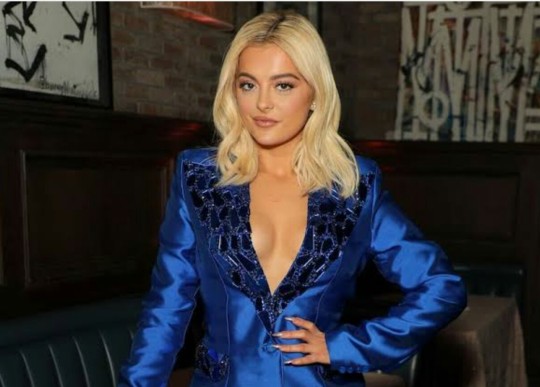
Bebe Rexha = August 30, 1989

Cameron Diaz = August 30, 1972
0 notes
Photo
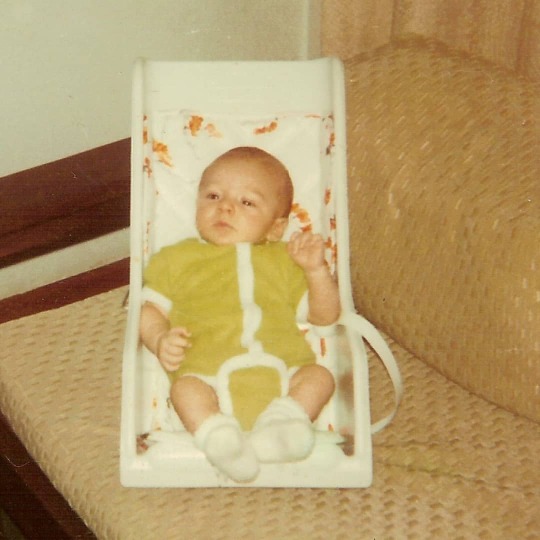
Lá no início dos anos 70... ainda praticamente inofensivo! #diadacrianca #12deoutubro #bebe #crianca #datacomemorativa #lembranca #memoria #70s #anos70 #1972 (em Paraíso) https://www.instagram.com/p/CGQJEVkFBNn/?igshid=1hx5vniiqpkw0
2 notes
·
View notes
Text

Ca. 1972 - 18-year-old American model Bebe Buell portrayed by Steve Anderson in one of her first photo shots.
Information from her instagram account.
#Bebe Buell#Bebe model#1972 Bebe#1970s Bebe#1973 Bebe#1972#1970s#model#muse#musician#manager#author#singer#singer songw#singer songwriter
5 notes
·
View notes
Photo

Ar
É da liberdade destes ventos
que me faço.
Pássaro-meu corpo
(máquina de viver),
bebe o mel feroz do ar
nunca o sossego.
Arraial do Cabo (RJ), 1972
38 notes
·
View notes
Text
The Untold History of Cabaret: Revived and Kicking
As Broadway welcomes the ever-evolving musical, its star, Eddie Redmayne—along with Liza Minnelli, Joel Grey, and Sam Mendes—assess its enduring power.
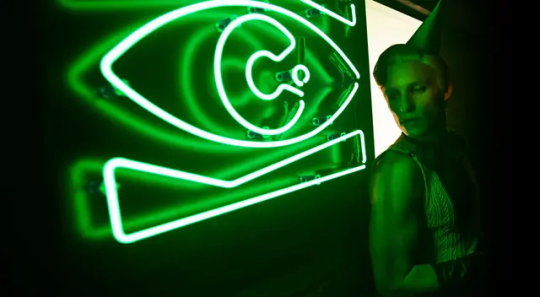
As director Rebecca Frecknall was rehearsing a new cast for her hit London revival of Cabaret, the actor playing Clifford Bradshaw, an American writer living in Berlin during the final days of the Weimar Republic, came onstage carrying that day’s newspaper as a prop. It happened to be Metro, the free London tabloid commuters read on their way to work. The date was February 25, 2022. When the actor said his line—“We’ve got to leave Berlin—as soon as possible. Tomorrow!”—Frecknall was caught short. She noticed the paper’s headline: “Russia Invades Ukraine.”
Cabaret, the groundbreaking 1966 Broadway musical that tackles fascism, antisemitism, abortion, World War II, and the events leading up to the Holocaust, had certainly captured the times once again.
Back in rehearsals four months later, Frecknall and the cast got word that the Supreme Court had overturned Roe v. Wade. Every time she checks up on Cabaret, “it feels like something else has happened in the world,” she told me over coffee in London in September.
A month later, as Frecknall was preparing her production of Cabaret for its Broadway premiere, something else did happen: On October 7, Hamas terrorists infiltrated Israel, killing at least 1,200 people and taking more than 240 hostages.
The revival of Cabaret—starring Eddie Redmayne as the creepy yet seductive Emcee; Gayle Rankin as the gin-swilling nightclub singer Sally Bowles; and Bebe Neuwirth as Fraulein Schneider, a landlady struggling to scrape by—opens April 21 at Manhattan’s August Wilson Theatre. It will do so in the shadow of a pogrom not seen since the Einsatzgruppen slaughtered thousands of Jews in Eastern Europe and in the shadow of a war between Israel and Hamas that continues into its fifth month, with the killing of thousands of civilians in Gaza.
Nearly 60 years after its debut, Cabaret still stings. That is its brilliance. And its tragedy.
Redmayne has been haunted by Cabaret ever since he played the Emcee in prep school. “I was staggered by the character,” he says. “The lack of definition of it, the enigma of it.” He played the part again during his first year at Cambridge at the Edinburgh Fringe Festival, where nearly 3,500 shoestring productions jostle for attention each summer. Cabaret, performed in a tiny venue that “stank,” Redmayne recalls, did well enough that the producers added an extra show. He was leering at the Kit Kat Club girls from 8 p.m. till 10 p.m. and then from 11 p.m. till two in the morning. “You’d wake up at midday. You barely see sunshine. I just became this gaunt, skeletal figure.” His parents came to see him and said, “You need vitamin D!”
In 2021, Redmayne, by then an Oscar winner for The Theory of Everything and a Tony winner for Red, was playing the Emcee again, this time in Frecknall’s West End production. His dressing room on opening night was full of flowers. There was one bouquet with a card he did not have a chance to open until intermission. It was from Joel Grey, who originated the role on Broadway and won an Oscar for his performance alongside Liza Minnelli in the 1972 movie. He welcomed the young actor “to the family,” Redmayne says. “It was an extraordinary moment for me.”
Cabaret is based on Goodbye to Berlin, the British writer Christopher Isherwood’s collection of stories and character studies set in Weimar Germany as the Nazis are clawing their way to power. Isherwood, who went to Berlin for one reason—“boys,” he wrote in his memoir Christopher and His Kind—lived in a dingy boarding house amid an array of sleazy lodgers who inspired his characters. But aside from a fleeting mention of a host at a seedy nightclub, there is no emcee in his vignettes. Nor is there an emcee in I Am a Camera, John Van Druten’s hit 1951 Broadway play adapted from Isherwood’s story “Sally Bowles” from Goodbye to Berlin.
The character, one of the most famous in Broadway history, was created by Harold Prince, who produced and directed the original Cabaret. “People write about Cabaret all the time,” says John Kander, who composed the show’s music and is, at 96, the last living member of that creative team. “They write about Liza. They write about Joel, and sometimes about us [Kander and lyricist Fred Ebb]. None of that really matters. It’s all Hal. Everything about this piece, even the variations that happen in different versions of it, is all because of Hal.”
In 1964, Prince produced his biggest hit: Fiddler on the Roof. In the final scene, Tevye and his family, having survived a pogrom, leave for America. There is sadness but also hope. And what of the Jews who did not leave? Cabaret would provide the tragic answer.
But Prince was after something else. Without hitting the audience over the head, he wanted to create a musical that echoed what was happening in America: young men being sent to their deaths in Vietnam; racists such as Alabama politician “Bull” Connor siccing attack dogs on civil rights marchers. In rehearsals, Prince put up Will Counts’s iconic photograph of a white student screaming at a Black student during the Little Rock crisis of 1957. “That’s our show,” he told the cast.
A bold idea he had early on was to juxtapose the lives of Isherwood’s lodgers with one of the tawdry nightclubs Isherwood had frequented. In 1951, while stationed as a soldier in Stuttgart, Germany, Prince himself had hung around such a place. Presiding over the third-rate acts was a master of ceremonies in white makeup and of indeterminate sexuality. He “unnerved me,” Prince once told me. “But I never forgot him.”
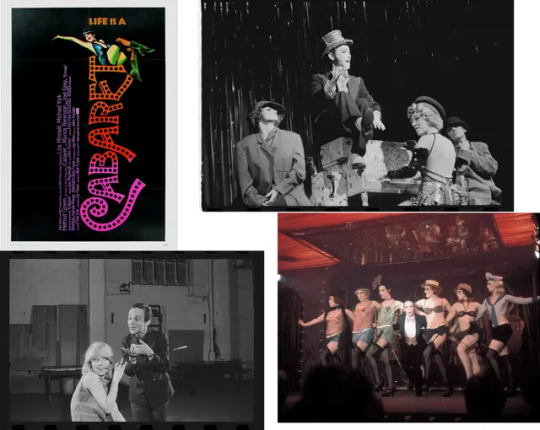
Kander had seen the same kind of character at the opening of a Marlene Dietrich concert in Europe. “An overpainted little man waddled out and said, ‘Willkommen, bienvenue, welcome,’ ” Kander recalls.
The first song Kander and Ebb wrote for the show was called “Willkommen.” They wrote 60 more songs. “Some of them were outrageous,” Kander says. “We wrote some antisemitic songs”—of which there were many in Weimar cabarets—“ ‘Good neighbor Cohen, loaned you a loan.’ We didn’t get very far with that one.”
They did write one song about antisemitism: “If You Could See Her (The Gorilla Song),” in which the Emcee dances with his lover, a gorilla in a pink tutu. At the end of the number, he turns to the audience and whispers: “If you could see her through my eyes, she wouldn’t look Jewishhh at all.” It was, they thought, the most powerful song in the score.
The working title of their musical was Welcome to Berlin. But then a woman who sold blocks of tickets to theater parties told Prince that her Jewish clients would not buy a show with “Berlin” in the title. Strolling along the beach one day, Joe Masteroff, who was writing the musical’s book, thought of two recent hits, Carnival and Camelot. Both started with a C and had three syllables. Why not call the show Cabaret?
To play the Emcee, Prince tapped his friend Joel Grey. A nightclub headliner, Grey could not break into Broadway. “The theater was very high-minded,” he once said. When Prince called him, he was playing a pirate in a third-rate musical in New York’s Jones Beach. “Hal knew I was dying,” Grey recounts over lunch in the West Village, where he lives. “I wanted to quit the business.”
At first, he struggled to create the Emcee, who did not interact with the other characters. He had numbers but “no words, no lines, no role,” Grey wrote in his memoir, Master of Ceremonies. A polished performer, he had no trouble with the songs, the dances, the antics. “But something was missing,” he says. Then he remembered a cheap comedian he’d once seen in St. Louis. The comic had told lecherous jokes, gay jokes, sexist jokes—anything to get a laugh. One day in rehearsal, Grey did everything the comedian had done “to get the audience crazy. I was all over the girls, squeezing their breasts, touching their bottoms. They were furious. I was horrible. When it was over I thought, This is the end of my career.” He disappeared backstage and cried. “And then from out of the darkness came Mr. Prince,” Grey says. “He put his hand on my shoulder and said, ‘Joely, that’s it.’ ”
Cabaret played its first performance at the Shubert Theatre in Boston in the fall of 1966. Grey stopped the show with the opening number, “Willkommen.” “The audience wouldn’t stop applauding,” Grey recalls. “I turned to the stage manager and said, ‘Should I get changed for the next scene?’ ”
The musical ran long—it was in three acts—but it got a prolonged standing ovation. As the curtain came down, Richard Seff, an agent who represented Kander and Ebb, ran into Ebb in the aisle. “It’s wonderful,” Seff said. “You’ll fix the obvious flaws.” In the middle of the night, Seff’s phone rang. It was Ebb. “You hated it!” the songwriter screamed. “You are of no help at all!”
Ebb was reeling because he’d learned Prince was going to cut the show down to two acts. Ebb collapsed in his hotel bed, Kander holding one hand, Grey the other. “You’re not dying, Fred,” Kander told him. “Hal has not wrecked our show.”
Cabaret came roaring into New York, fueled by tremendous word of mouth. But there was a problem. Some Jewish groups were furious about “If You Could See Her.” How could you equate a gorilla with a Jew? they wanted to know, missing the point entirely. They threatened to boycott the show. Prince, his eye on ticket sales, told Ebb to change the line “She wouldn’t look Jewish at all” to something less offensive: “She isn’t a meeskite at all,” using the Yiddish word for a homely person.
It is difficult to imagine the impact Cabaret had on audiences in 1966. World War II had ended only 21 years before. Many New York theatergoers had fled Europe or fought the Nazis. There were Holocaust survivors in the audience; there were people whose relatives had died in the gas chambers. Grey knew the show’s power. Some nights, dancing with the gorilla, he’d whisper “Jewish” instead of “meeskite.” The audience gasped.

Cabaret won eight Tony Awards in 1967, catapulted Grey to Broadway stardom, and ran for three years. Seff sold the movie rights for $1.5 million, a record at the time. Prince, about to begin rehearsals for Stephen Sondheim’s Company, was unavailable to direct the movie, scheduled for a 1972 release. So the producers hired the director and choreographer Bob Fosse, who needed the job because his previous movie, Sweet Charity, had been a bust.
Fosse, who saw Prince as a rival, stamped out much of what Prince had done, including Joel Grey. He wanted Ruth Gordon to play the Emcee. But Grey was a sensation, and the studio wanted him. “It’s either me or Joel,” Fosse said. When the studio opted for Grey, Fosse backed down. But he resented Grey, and relations between them were icy.
A 26-year-old Liza Minnelli, on the way to stardom herself, was cast as Sally Bowles. The handsome Michael York would play the Cliff character, whose name in the movie was changed to Brian Roberts. And supermodel Marisa Berenson (who at the time seemed to be on the cover of Vogue every other month) got the role of a Jewish department store heiress, a character Fosse took from Isherwood’s short story “The Landauers.”
Cabaret was shot on location in Munich and Berlin. “The atmosphere was extremely heavy,” Berenson recalls. “There was the whole Nazi period, and I felt very much the Berlin Wall, that darkness, that fear, all that repression.” She adored Fosse, but he kept her off balance (she was playing a young woman traumatized by what was happening around her) by whispering “obscene things in my ear. He was shaking me up.”
Minnelli, costumed by Halston for the film, found Fosse “brilliant” and “incredibly intense,” she tells Vanity Fair in a rare interview. “He used every part of me, including my scoliosis. One of my great lessons in working with Fosse was never to think that whatever he was asking couldn’t be done. If he said do it, you had to figure out how to do it. You didn’t think about how much it hurt. You just made it happen.”
Back in New York, Fosse arranged a private screening of Cabaret for Kander and Ebb. When it was over, they said nothing. “We really hated it,” Kander admits. Then they went to the opening at the Ziegfeld Theatre in New York. The audience loved it. “We realized it was a masterpiece,” Kander says, laughing. “It just wasn’t our show.”
“PAPA WAS EVEN MORE EXCITED ABOUT THE OSCAR THAN I WAS,” SAYS LIZA MINNELLI. “AND, BABY, I WAS—NO, I AM STILL—EXCITED.”
The success of the movie—with its eight Academy Awards—soon overshadowed the musical. When people thought of Cabaret, they thought of finger snaps and bowler hats. They thought of Fosse and, of course, Minnelli, who would adopt the lyric “Life is a cabaret” as her signature. Her best-actress Oscar became part of a dynasty: Her mother, Judy Garland, and father, director Vincente Minnelli, each had one of their own. “Papa was even more excited about the Oscar than I was,” she says. “And, baby, I was—no, I am still—excited.”
By 1987—in part to burnish Cabaret’s theatrical legacy—Prince decided to recreate his original production on Broadway, with Grey once again serving as the Emcee. But it had the odor of mothballs. The New York Times drama critic Frank Rich wrote that it was not, as Sally Bowles sings, “perfectly marvelous,” but “it does approach the perfectly mediocre.” Much of the show, he added, was “old-fashioned and plodding.”
In the early 1990s, Sam Mendes, then a young director running a pocket-size theater in London called the Donmar Warehouse, heard the novelist Martin Amis give a talk. Amis was writing Time’s Arrow, about a German doctor who works in a concentration camp. “I’ve already written about the Nazis and people say to me, ‘Why are you doing it again?’ ” Amis said. “And I say, what else is there?”
At the end of the day,” Mendes tells me, “the biggest question of the 20th century is, ‘How could this have happened?’ ” Mendes decided to stage Cabaret at the Donmar in 1993. Another horror was unfolding at the time: Serb paramilitaries were slaughtering Bosnian Muslims, “ethnic cleansing” on an unimaginable scale.
Mendes hit on a terrific concept for his production: He transformed his theater into a nightclub. The audience sat at little tables with red lamps. And the performers were truly seedy. He told the actors playing the Kit Kat Club girls not to shave their armpits or their legs. “Unshaved armpits—it sent shock waves around the theater,” he recalls. Since there was no room—or money—for an orchestra, the actors played the instruments. Some of them could hit the right notes.
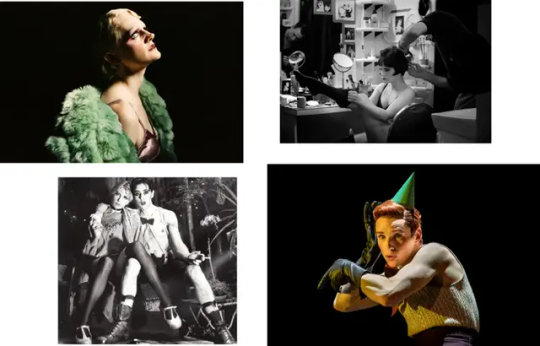
To play the Emcee, Mendes cast Alan Cumming, a young Scottish actor whose comedy act Mendes had enjoyed. “Can you sing?” Mendes asked him. “Yeah,” Cumming said. Mendes threw ideas at him and “he was open to everything.” Just before the first preview, Mendes suggested he come out during the intermission and chat up the audience, maybe dance with a woman. Mendes, frantic before the preview, never got around to giving Cumming any more direction than that. No matter. Cumming sauntered onstage as people were settling back at their tables, picked a man out of the crowd, and started dancing with him. “Watch your hands,” he said. “I lead.”
Cumming’s Emcee was impish, fun, gleefully licentious. The audience loved him. “I have never had less to do with a great performance in one of my shows than I had to do with Alan,” Mendes says.
When Joe Masteroff came to see the show in London, Mendes was nervous. He’d taken plenty of liberties with the script. Cliff, the narrator, was now openly gay. (One night, when Cliff kissed a male lover, a man in the audience shouted, “Rubbish!”) And he made the Emcee a victim of the Nazis. In the final scene, Cumming, in a concentration camp uniform affixed with a yellow Star of David and a pink triangle, is jolted, as if he’s thrown himself onto the electrified fence at Birkenau.
“I should be really pissed with you,” Masteroff told Mendes after the show. “But it works.” Kander liked it too, though he was not happy that the actors didn’t play his score all that well. Ebb hated it. “He wanted more professionalism,” Mendes says. “And he was not wrong. There was a dangerous edge of amateurishness about it.”
The Roundabout Theatre Company brought Cabaret to New York in 1998. Rob Marshall, who would go on to direct the movie Chicago, helped Mendes give the show some Broadway gloss while retaining its grittiness. The two young directors were “challenging each other, pushing each other,” Marshall remembers, “to create something unique.”
Cumming reprised his role as the Emcee. He was on fire. Natasha Richardson, the daughter of Vanessa Redgrave and director Tony Richardson, played Sally Bowles. She was not on fire. She’d never been in a musical before, and when she sang, “There was absolutely no sound coming out,” Kander says.
“She beat herself up about her singing all the time,” Mendes adds. “There was a deep, self-critical aspect of Tash that was instilled by her dad, a brilliant man but extremely cutting.” He once said to her out of nowhere: “We’re going to have to do something about your chin, dear.” As Mendes saw it, she always felt that she could never measure up to her parents.
Kander went to work with her, and slowly a voice emerged. It was not a “polished sound,” Marshall says, but it was haunting, vulnerable. Still, Cumming was walking away with the show. At the first preview, when he took his bow, the audience roared. When Richardson took hers, they were polite. Mendes remembers going backstage and finding her “in tears.” But she persevered and through sheer force of will created a Sally Bowles that “will break your heart,” Masteroff told me the day before I saw that production in the spring of 1998. She did indeed. (Eleven years later, while learning how to ski on a bunny hill on Mont Tremblant, she fell down. She died of a head injury two days later.)
The revival of Cabaret won four Tony Awards, including one for Richardson as best actress in a musical. It ran nearly 2,400 performances at the Roundabout’s Studio 54 and was revived again in 2014. And the money, money, money, as the song goes, poured in. Once Masteroff, having already filed his taxes at the end of a lucrative Cabaret year, went to the mailbox and opened a royalty check for $60,000. “What the hell am I supposed to do with this?” he snapped.
Rebecca Frecknall grew up on Mendes’s Donmar Warehouse production of Cabaret. The BBC filmed it, and when it aired, her father videotaped it. She watched it “religiously.” But when she came to direct her production, she had to put Mendes’s version out of her mind.
Mendes turned his little theater into a nightclub. Frecknall, working with the brilliant set and costume designer Tom Scutt, has upped the game. They have transformed the entire theater into a Weimar cabaret. You stand in line at the stage door, waiting, you hope, to be let in. Once inside, you’re served drinks while the Kit Kat Club girls dance and flirt with you. The show’s logo is a geometric eye. Scutt sprinkles the motif throughout his sets and costumes. “It’s all part of the voyeurism,” Scutt explains. “The sense of always being watched, always watching—responsibility, culpability, implication, blame.”
REDMAYNE’S EMCEE IS STILL SEXY AND SEDUCTIVE, BUT AS THE SHOW GOES ON HE BECOMES A PUPPET MASTER MANIPULATING THE OTHER CHARACTERS, SOMETIMES TO THEIR DOOM.
Mendes’s Cabaret, like Fosse’s, had a black-and-white aesthetic—black fishnet stockings, black leather coats, a white face for the Emcee. Frecknall and Scutt begin their show with bright colors, which slowly fade to gray as the walls close in on the characters. “Color and individuality—to grayness and homogeneity,” Frecknall says.
As the first woman to direct a major production of Cabaret, Frecknall has focused attention on the Kit Kat Club girls—Rosie, Fritzie, Frenchie, Lulu, and Texas. “Often what I’ve seen in other productions is this homogenized group of pretty, white, skinny girls in their underwear,” she insists. Her Kit Kat Club girls are multiethnic. Some are transgender. Through performances and costumes, they are no longer appendages of the Emcee but vivid characters in their own right.

Her boldest stroke has been to reinvent the Emcee. She and Redmayne have turned him into a force of malevolence. He is still sexy and seductive, but as the show goes on, he becomes a skeletal puppet master manipulating the other characters to, in many cases, their doom. If Cumming’s Emcee was, in the end, a Holocaust victim, Redmayne’s is, in Frecknall’s words, “a perpetrator.”
Unwrapping a grilled cheese sandwich in his enormous Upper West Side townhouse, Kander says that his husband had recently asked him a pointed question: “Did it ever occur to you that all of you guys who created Cabaret were Jewish?”
“Not really,” Kander replied. “We were just trying to put on a show.” Or, as Masteroff once said: “It was a job.”
It’s a “job” that has endured. The producers of the Broadway revival certainly have faith in the show’s staying power. They’ve spent $25 million on the production, a big chunk of it going to reconfigure the August Wilson Theatre into the Kit Kat Club. Audience members will enter through an alleyway, be given a glass of schnapps, and can then enjoy a preshow drink at a variety of lounges designed by Scutt: The Pineapple Room, Red Bar, Green Bar, and Vault Bar. The show will be performed in the round, tables and chairs ringing the stage. And they’ll be able to enjoy a bottle (or two) of top-flight Champagne throughout the performance.
This revival is certainly the most lavish Cabaret in a long time. But there have been hundreds of other, less heralded productions over the years, with more on the way. A few months before Russia invaded Ukraine, Cabaret was running in Moscow. Last December, Concord Theatricals, which licenses the show, authorized a production at the Molodyy Theatre in Kyiv. And a request is in for a production in Israel, the first since the show was produced in Tel Aviv in 2014.
“The interesting thing about the piece is that it seems to change with the times,” Kander says. “Nothing about it seems to be written in stone except its narrative and its implications.”
And whenever someone tells him the show is more relevant than ever, Kander shakes his head and says, “I know. And isn’t that awful?”′
You can also listen the entire article here !!
https://www.vanityfair.com/style/cabaret-revival
I know it's a very long article , but very interesting!!
#eddie redmayne#cabaret#cabaret story#theatre#vanity fair#liza minelli#alan cumming#rebecca frecknall#director#gayle rankin#sally bowles#the emcee#nyc#august wilson#broadway#tom scutt#costume designer#scenic theatre#emma stone
19 notes
·
View notes
Text
Broadway Divas Tournament: Round 4

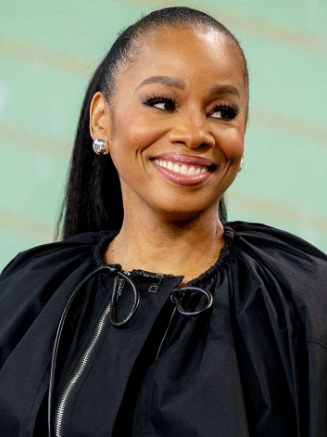
Two-time Tony-winning dancer-extraordinaire Bebe Neuwirth (1958) is best known for her winning role as Velma Kelly in Chicago (1996) alongside her beloved Annie Reinking. After playing Velma off-and-on for some years, she then took on Roxie, and later Matron "Mama" Morton. Bebe has also won for Sweet Charity (1986), and is a two-time Emmy winner for, of course, Lilith in Cheers. Other credits include Here Lies Jenny (2004), Fosse (2001), and Cabaret (2024), which opened to glowing reviews for Bebe, and dismal reviews for basically everything else. In addition to her beloved stage, Bebe is a devoted cat-lover, and activist. She founded the Dancers' Resource program to provide support for injured and/or aging dancers.
Anika Noni Rose (1972) is a Tony-winning actress known for Caroline, or Change (2004), A Raisin in the Sun (2014), and the 2013 first workshop of Hamilton where she originated Angelica Schuyler. She is also known for being one of the iconic Dreamgirls in the 2006 film, as well as the voice of Tiana in Disney's The Princess and the Frog. In 2011, alongside Lea Salonga, she was named a certified, official, Disney Legend. Her latest Broadway show, Uncle Vanya, just opened this past week.
NEW PROPAGANDA AND MEDIA UNDER CUT: ALL POLLS HERE

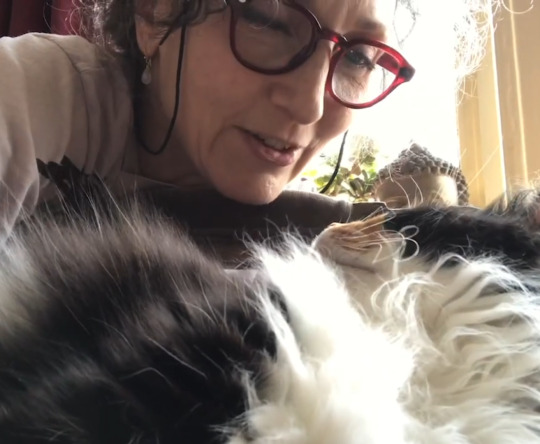


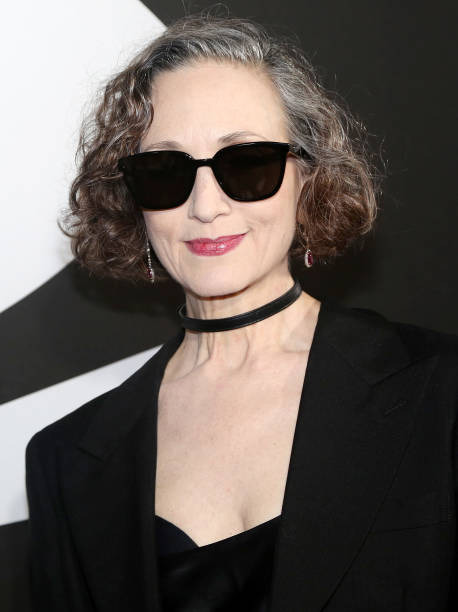
youtube
"Bebe Neuwirth, my beloved, I have at last seen you in Cabaret, and I am so sorry. You deserve a far better production, and a far better show social media team that recognizes your abundant talent and rave reviews. Please continue to post cat photos, because they bring me nothing but joy."
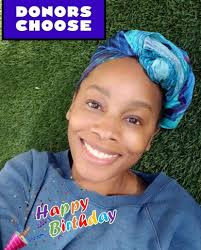
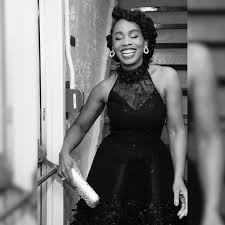

youtube
"Does Anika Noni Rose not have a pet? In my quest to get a photo of every Diva with their animal, she turned up empty, so...that's something. Also, her Vanya revival wasn't well-received, so that's two Divas in this poll in substandard revivals. Woo-hoo."
#broadwaydivastournament#broadway#tournament poll#broadway divas#musical theatre#bebe neuwirth#anika noni rose#round 4#look i tried to get them on the same song wavelength like everyone else but i couldn't locate bebe's “another hundred people” in time
3 notes
·
View notes
Text

nct/wayv members represented in this collab: ot23
basis of the collab: rockstars/musicians!au but they aren’t idols, modern day doesn’t have a pandemic raging
deadline: as of right now, december 31st 2021 but it can be moved into 2022 if necessary
minimum word count: 7k
based on the band au my anons and i have been writing on my other blog; more information under the cut... note that members’ instruments and stuff are liable to change!
i’ll be adding everyone in the collab to a discord server and we can switch things around and discuss them in that server!
details under the cut.
the year is 1972, and yuta nakamoto is fucking pissed.
governments - yes, all of them - are shit, the people of the world are tearing themselves apart just to serve the few who are wealthiest, there is racism and sexism and homophobia and everything other negative -ism and -phobia you can think of ingrained into the skins of everyday humans who can only feel everyday hatred. life, on the whole, is terrifying mundane and horribly overstimulating, somehow simultaneously.
the year is 1972, yuta nakamoto is angrier at The System than he’s ever been, but, unlike before, he finally thinks that he’s going to do something about it. armed with nothing but a guitar, youthful bullheadedness, and a notebook full of lyrics, he does what anyone in his position would do: he starts a rock band.
taeil (vocals, rhythm guitar): @prettyjaems
yuta (frontman, vocals, bass guitar): @gohyuck
jaehyun (vocals, lead guitar, doubles as manager): @moonlit-jeno
jungwoo (vocals, electric guitar): @domjaehyun
winwin (vocals, drums (and keyboard in the studio if needed)): @loviejaehyun
the year is 2002, and ten lee loves people but hates what the world can do to them.
as technology grows, so do threats - as people become more open with love, others become more outright in hate. fear has an iron-fisted grip on the people of the world, one that can’t be loosened as easily as ten wishes it could. he doesn’t even have words when it comes to the government, or to the rich, or to those who oppress when they might aid instead.
the year is 2002, ten lee wants to remind the world of love in the face of hate, and in between college classes and volunteering and a million other things, he decides to do something about it. with a voice that’ll make him a star one day and inspired by his favorite band from the 70s, he does exactly what you’d expect him to: he starts a pop punk band that veers into alternative and hard rock and maybe even r&b, sometimes.
johnny (vocals, drums): @heychan
taeyong (vocals, keyboard): @ceruleanskies
kun (vocals, lead guitar): @wonjaekook
ten (frontman, lead vocals): @yeosang-ponytail
doyoung (vocals, bass guitar, doubles as manager): @markresonates
the year is 2020, and jeno lee is a college junior, which should be the most of his worries but is somehow the least.
the government still sucks - yes, all governments, surprise, surprise! - and the people are starting to suck more and more as every day passes. sure, school is swamping him and he has a social life to balance with work and internships and anything and everything else he has going on, but jeno starts every day by checking the news app on his phone and, hell, if that won’t kill any urge to do anything, he doesn’t know what will.
the year is 2020, and you know the drill by now. jeno’s always loved playing the guitar and writing lyrics on his own time, performing for his family and sometimes his friends, too. hell, his friends have had a ragtag ‘band’ since his freshman year, but chenle and jisung had been juniors in high school then, making band practice a rarity. inspired by his favorite bands from the 70s, he can’t help but feel like he almost has an obligation to churn out protest music and love songs alike in a world that’s quickly forgetting how to love at all.
mark (their manager, underground rap is more his thing): @lucas-wongs
renjun (lead vocals, rhythm guitar): @waithyuck
jeno (frontman, screamer (sometimes), vocals, lead guitar): @byunbaekby
haechan (vocals, screamer (sometimes), drums/keyboard): @yongiefilms
jaemin (vocals, bass guitar): @meow-bebe
chenle (vocals, keyboard/drums): @dreamyyang
jisung (other manager, sometimes helps write lyrics and they always (always!) credit him when he does so): @imhyuckedup119
yangyang (ex-drummer, now underground rapper): @moondustaeil
the year is... still 2020, and xiaojun is a college senior who’s pretty much in the same boat jeno is.
he’s just not that big of a rock fan, if he’s being honest. yes, the government sucks, and yes, everything is bad, but music is an escape for him, and he wants to keep it that way. the real world is bad enough as it is, and even though he takes it upon himself to speak up and speak out as often as possible, music is his refuse. when his guitar is in his hands, the world melts away.
the year is 2020, and xiaojun wants to make others feel safe. inspired by his favorite band from the 00s, he wants to make people feel love again. he wants to wrap listeners in his music and give them comfort. he does exactly what anyone like him would do: he starts a band. their genre isn’t as rigid, and it’s really more of a go-with-the-flow type thing. he guesses that they’re a cross between indie and folk and alternative and some r&b and anything and everything in between.
lucas (rap, drums): @puppywritings
xiaojun (frontman, vocals, lead guitar): @neonun-au
hendery (vocals, rhythm guitar): @itsapapisongo
shotaro (vocals, keyboard): @jungwooisms
sungchan (rap, bass guitar): @nowthislookslikeajobforme
please message me privately if you’re interested! thank you so much.
#first#five#tags#dont#work#nct 127#nct dream#wayv#nct 127 fluff#nct 127 smut#nct 127 angst#nct dream fluff#nct dream smut#nct dream angst#wayv smut#wayv angst#wayv fluff#taeyong scenario#mark lee scenaro#jeno scenario#jaehyun scenario#jaemin scenario
213 notes
·
View notes
Text
Some of The best TV themes.
Do you think the theme song is the best part of a show. These are some of the best TV theme songs.
Friends

Ran from 1994 to 2004 and starred Jennifer Aniston; Courteney Cox; Lisa Kudrow; Matt LeBlanc; Matthew Perry and David Schwimmer. Six young women and men live in the same apartment complex and face life ups and downs together in Manhattan, New York City.
The Opening theme song: "I'll Be There for You"; was Sung by The Rembrandts.
Cheers

Ran from 1982 to 1993 It starred Ted Danson, Shelley Long, Nicholas Colasanto, Rhea Perlman, George Wendt, John Ratzenberger, Kelsey Grammer, Woody Harrelson, Kirstie Alley and Bebe Neuwirth. At the center of the show was the bar's owner and head bartender Sam Malone. Someone in my family taped the final episode and after party on VHS.
Opening theme: "Where Everybody Knows Your Name" by Gary Portnoy.
M*A*S*H

Ran from 1972 to 1983 and starred Alan Alda, Wayne Rogers, McLean Stevenson, Loretta Swit, Larry Linville, Gary Burghoff, Mike Farrell, Harry Morgan, Jamie Farr, William Christopher, David Ogden Stiers, The 4077th Mobile Army Surgical Hospital care for the injured soldiers during the Korean War and use humor to escape from the horror and depression of the war.
Opening theme: "Suicide Is Painless" (Instrumental).
The Brady bunch
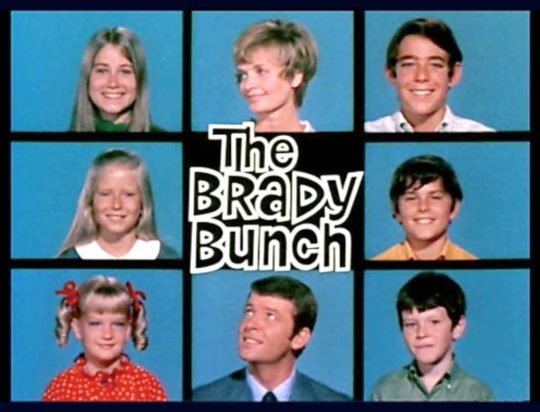
Ran from 1969 to 1974 and starred Robert Reed, Florence Henderson, Ann B. Davis,
Maureen McCormick, Barry Williams, Christopher Knight, Eve Plumb, Mike Lookinland and Susan Olsen. The show is about Mike Brady ( a widowed and architect with three sons—Greg, Peter and Bobby he marries Carol Martin who has three daughters: Marcia, Jan and Cindy and Alice Nelson Mike's live-in housekeeper and now the Brady's and the boys' dog, Tiger.
Opening Theme: The Brady Bunch Theme Song (Sung by the kids from season 2 on).
The golden girls

Ran from 1985 to 1992 and starred Beatrice Arthur, Betty White, Rue McClanahan and Estelle Getty The show features an ensemble cast and the plot revolves around four older single women (three widows and one divorcée) sharing a house in Miami. Betty white almost lived to 100.
Opening theme: "Thank You for Being a Friend" performed by Cynthia Fee.
The love boat

Ran from 1976 to 1990 It starred Gavin MacLeod, Bernie Kopell, Fred Grandy, Ted Lange, Lauren Tewes, Jill Whelan, Ted McGinley and Pat Klous. The show was based on the original 1976 made-for-TV movie (also titled The Love Boat) which was based of a nonfiction book called The Love Boats by Jeraldine Saunders, a real-life cruise director for a passenger cruise-ship line.
Opening theme: "The Love Boat" sung by Jack Jones, in seasons 1–8; then by Dionne Warwick in season 9.
The Addams family

Ran from 1964 to 1966 it starred Carolyn Jones, John Astin, Jackie Coogan, Ted Cassidy, Blossom Rock, Ken Weatherwax and Lisa Loring. It came out the same week as The Munsters. The Addams Family is a close-knit extended family with creepy interests and supernatural abilities, which is never explained how they got the powers in the first place.
Opening theme: by Vic Mizzy.
The Mary Tyler Moore show

Ran from 1977 to
It starred Mary Tyler Moore, Georgia Engel, Betty White, Cloris Leachman, Valerie Harper, Ed Asner, Gavin MacLeod and Ted Knight. Mary Richards is a single woman who moves to Minneapolis and gets a job at fictional television station WJM and is associate producer of the station's six o'clock news.
Opening theme: Love Is All Around.
#Mash#friends#cheers#marytylermooreshow#tvshows#themes#theloveboat#thegoldengirls#thebradybunch#theadamsfamily
4 notes
·
View notes
